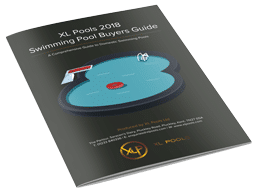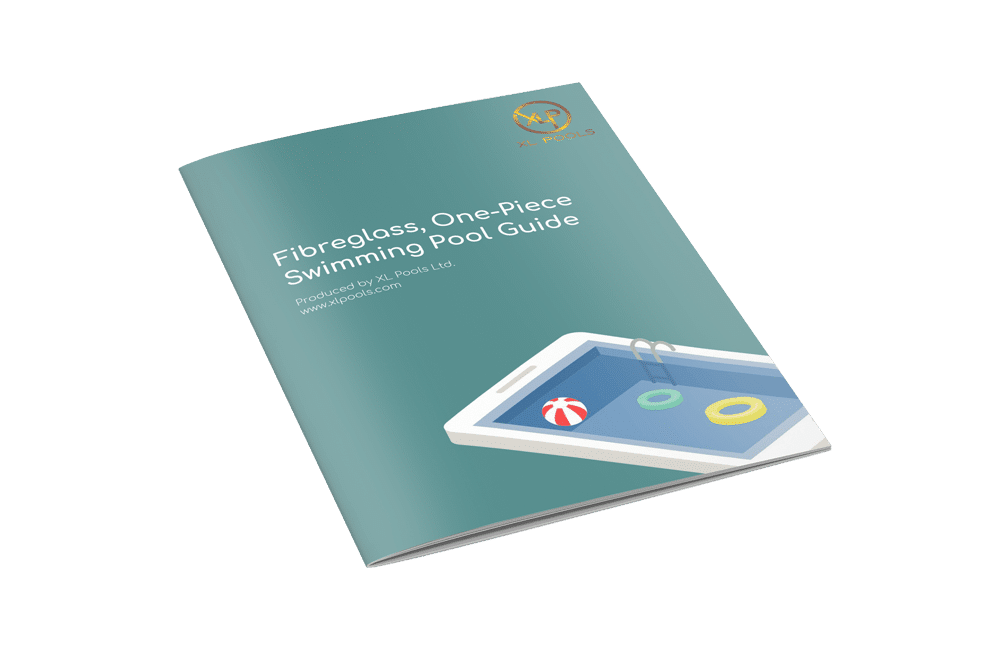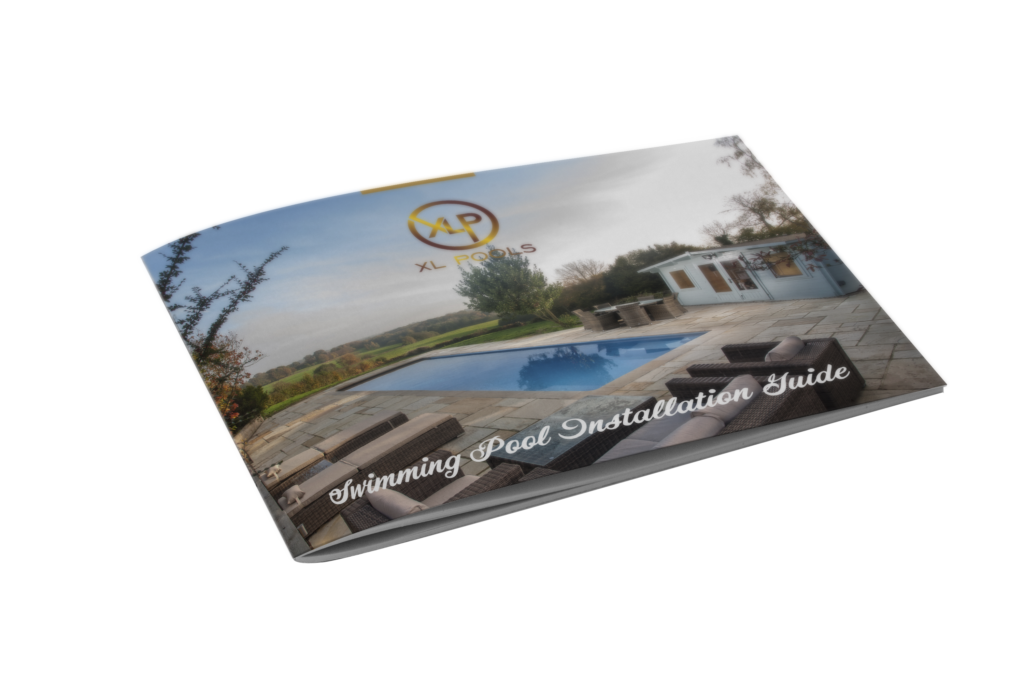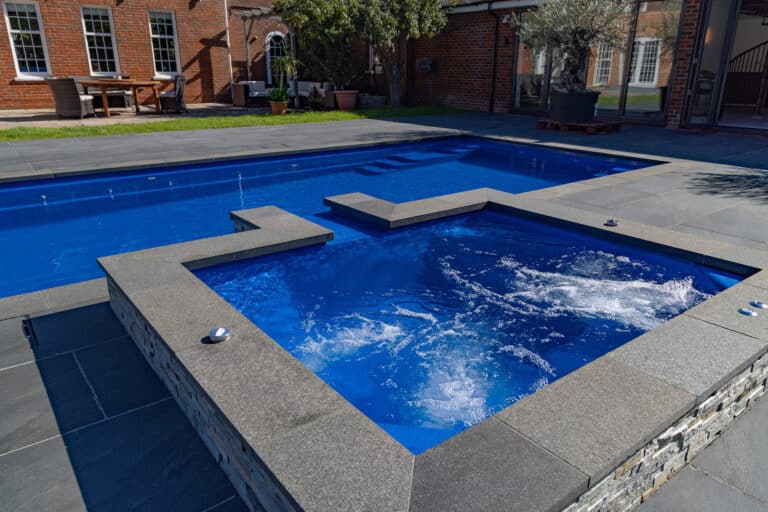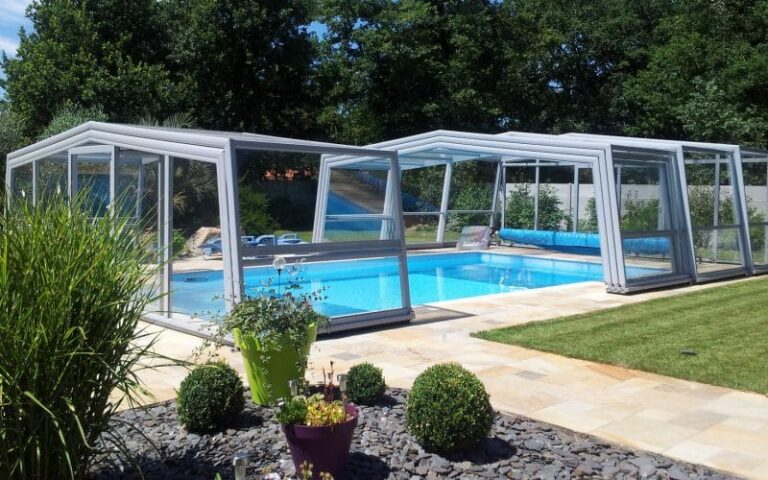The water in a swimming pool has to be kept well maintained to maintain perfect clarity, sanitation and wellbeing of the equipment as well as the pool finish. Maintaining your pool water means keeping a range of variables within tolerance and can become confusing to a new comer to the pool ownership club.
Today we explore the main variables you need to be checking on your pool and what to do if the readings are over or above the desired range.
1. Water balance
One of the first things you need to check regularly on your pool water is pH. Swimming pool water should typically be between 7.4 and 7.6 in pH which is slightly above neutral on the pH scale.
There are three main ingredients to keeping this balanced: pH, alkalinity and calcium hardness.
pH
Proper pH Level: 7.4 to 7.6
pH as it is, is an unstable variable. Anything that comes in contact with the water in a pool will affect the pH of your water be it, swimmers, environmental fallout, and even other chemicals you add to the pool.
pH relates to how acidic or basic (otherwise known as alkaline) the water is. If your pH is low, it is acidic. If your pH is high it is basic.
It is good to always have a healthy supply of pH increaser and pH reducer on hand in you chemical store in case of any variation to your pH and dose according to the label.
Alkalinity
Proper Alkalinity Level: 100-150ppm (parts per million)
To stop pH from significantly changing up and down, Alkalinity works as a buffer to absorb changes to the water before affecting pH.
Keep a well stocked supply of alkalinity increaser as the level of Alkalinity can fluctuate regularly.
Calcium Hardness
Proper Calcium Hardness Level: 200-275ppm (parts per million)
Calcium hardness isn’t strictly a variable that forms part of water balance but it is an important variable to check as without calcium you water will seek to replace the calcium content from wherever it can find it. This can include the walls of your pool!
It’s important to monitor the calcium hardness in your pool regularly and add calcium increaser whenever the level gets too low. It’s also important to not let the level go too high as this will leave scale deposits on the walls of your pool and inside your pool equipment, similar to how your kettle will build up.
To reduce the calcium content in your pool the only method is to drain your pool a bit and refill to dilute.
Important notes about water balance
It is vital to keep the level of pH and alkalinity in your pool water. It is worth checking these levels daily if at all possible. If not the minimum should be every other day this is especially true when you are new to pool ownership. Home test kits and dip sticks are both cheap and efficient at this job.
To keep your pool perfectly balanced you need to have the following chemicals on hand at all times:
- pH increaser
- pH reducer
- Alkalinity Increaser
People ask why there isn’t such thing as Alkalinity reducer. This is because pool chemical companies do not manufacture it! If your pH and alkalinity are high, alkalinity increaser will reduce both. You may need a little pH reducer in addition if your pH doesn’t reach 7.4.
Maintaining good water balance will ensure that the sanitation of your pool can work. pH blocks chlorine from working efficiently. If your pool has gone green overnight and there is chlorine in the pool, one likely suspect will be your pH is wrong and therefore your chlorine cannot work properly.
2. Sanitation
Keeping your pool water safe and clear of algae and bacteria is the job of sanitation. Most typically swimming pools are sanitised by chlorine. Other systems are available such as saltwater and active oxygen systems. All systems have their merits as well as their complications. For anyone new to swimming pools, it is best to find a solution that works for you and one you can understand fully. In this section we will discuss chlorine as it is by far the most common method of sanitising pools.
Chlorine
Proper Chlorine Level: 3ppm (parts per million)
Chlorine is a chemical that is very good at eliminating bacteria and algae that will thrive in pool water without it.
There are two main ways chlorine will be sold:
- Chlorine tablets
- Granular chlorine
Chlorine tablets are the most popular and convenient form. They can be dosed to the pool by a floating chlorine dispenser (not recommended), adding them to skimmer baskets in your pool, or by a chlorine dispenser in your filtration room (highly recommended).
Shock Chlorine
Shocking your pool is term you will hear often in the pool world. What this means is to dose a very, very high dose of chlorine to your pool and this is done by using shock chlorine.
When chorine particles kill organic matter or bacteria it is read on your test strips as combined chlorine. This combined chlorine sits in the pool water until it is oxidised and broken apart.
In order to oxidise you must shock the pool water by adding a high dose of chlorine to reach what is known as “breakpoint oxidation”.
It is good practice to use a shock chlorine once a week. You should do this ideally in the evening when the sun is not out as UV rays eat shock chlorine as it is not stabilised. It is also good to avoid use of the pool 24 hours after shocking the pool as the high level of chlorine will be dangerous to skin, hair and especially eyes.
What is breakpoint oxidation?
Breakpoint oxidation is achieved when the chlorine reading is over 10ppm your combined chlorine reading.
Chlorine has two readings: free chlorine and combined chlorine. Free chlorine refers to the chlorine that is free and available to be used against organic matter and bacteria. Combined chlorine is chlorine that has done this job already.
Other pool chemicals you should know:
Although checking just pH, alkalinity, calcium and chlorine levels would most likely keep your pool clean and clear all year, there are other chemicals you should be aware of in-case you need them.
Cyanuric Acid
Chlorine tablets that you use are typically stabilised, meaning that they are not susceptible to the suns UV rays. If you have fresh water in your pool it is good practice to dose cyanuric acid as a stabiliser to prevent chlorine being burnt off too quickly.
Algaecide
Algaecide is known to prevent algae from growing. Although this is not a product to use every week, it can help a pool from turning as green during the winter months and helps remove algae at the start of a season. It is also handy to use when your chlorine levels take a dip and a small dose can help prevent the growth of algae until you can get the chlorine level back. The best algae killer is chlorine and algaecide shouldn’t be relied on alone.
Clarifier and Flocculent
Clarifier works to help your filter remove small particles in the water by sticking particles together so they are more readily picked up by the sand as they pass through your filtration. Flocculent works by binding small particles and making them heavy thereby sinking them to the floor for you to vacuum them out of your pool.
Summary
To summarise, there are some important variables to monitor to maintain a clear and healthy pool. You will need to check these variables as regularly as every day.
- pH: 7.4 – 7.6
- Alkalinity: 100 – 150ppm
- Calcium Hardness: 175 – 225ppm
- Chlorine: 1 – 3ppm
Make sure to clean your pool regularly too by vacuuming and brushing your pool which we will cover in another post and will be linked here when live.

